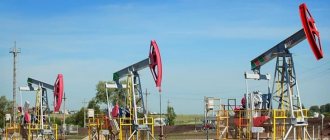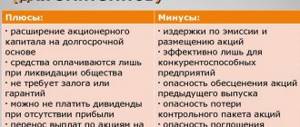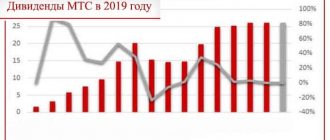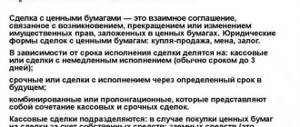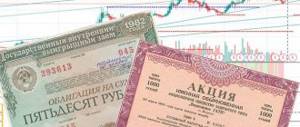When you have a problem, you start looking for ways to solve it, while at the same time thinking about how not to go through the same rake again next time. Whatever you make, from small mobile applications to large information systems, there is always a cost to making a mistake, and the more critical the industry that uses your product, the higher the cost of that mistake. Therefore, the ideal situation is when you work proactively, namely, try to predict the occurrence of a problem before it actually occurs. Extruder for polypropylene production
At SIBUR we have a “Digital Technologies” function, one of the areas of which deals with advanced analytics. We participate in all processes that are in one way or another related to the analysis of data that the company has: from readings from multiple sensors from production to stock market reports and forecasts. Using this data, we create digital products that measurably help improve a company's operational efficiency.
My name is Alexander Krot, I represent the direction of advanced analytics, and under the cut I’ll tell you this:
- how to reduce the number of unscheduled stops of the extruder, which cuts polypropylene into granules and tends to clog;
- how, using data analysis and a customized model, you can increase the production of butadiene by more than 100 tons per month;
- why reactor problems are easier to predict than to examine it with x-rays.
Operational efficiency in production can be improved in two ways.
The first is to increase output through a more stable production regime. The second is to reduce losses due to unscheduled shutdowns, each of which costs us millions in losses. Very often, the working model that will be used for predictive analytics is simply understood as a program. Like, here's the code, it will help predict possible problems, use it. We decided to go a different route and are creating a ready-made model as a full-fledged turnkey product, the output is a working self-learning model that can be adjusted, convenient interfaces and monitoring terminals, as well as support that responds to requests from users for new functions. Our users are operators who monitor the production process, so they know exactly what and how to change in the product to make it more convenient to use. After all, it is the operators who will monitor the terminal, react to changes in indicators and make adjustments.
Therefore, we build such models according to the classic product scheme; for each product, a team is created with the product owner, developer, designer, and data engineer. The team always has a production technologist - an employee who understands exactly how the production process works, which we intend to improve.
Each of these projects lasts from 3 to 6 months, depending on its complexity. To begin with, we conduct reconnaissance by sending a team into the fields (enterprises); we have this research procedure called “framing” in order to determine exactly what exactly the customer wants and whether it is even possible to solve the problem using data. If possible, then we begin to evaluate further: whether the available data is enough to solve the problem, where it can be downloaded from, whether organizational changes will be required. Of course, we separately calculate the economic effect in order to subsequently rank projects and take on only those that give the maximum effect. It’s clear that if we spend a lot of effort and time on a project that will ultimately save 5,000 rubles a month or a couple of light bulbs, then such a project is not really needed.
If we understand that the product will bring real benefits to the company (both in terms of optimizing the work itself and improving conditions for staff, and in terms of direct financial benefits), then we begin to work. Now we have implemented almost a dozen different projects at this pace, in this article I want to dwell on a couple of the most significant of them.
Increased interest in owners
There is information deformation in media materials about the holding. The most popular question is who owns Sibur. This priority looks rather strange, since there are plenty of interesting and truly important events in the company.
Perhaps this is due to the presence of Kirill Shamalov among the shareholders of Sibur, whose figure is of increased interest due to the alleged family relationship (maybe former) with Vladimir Putin.
Sibur does not have a sole owner. We are talking about the share distribution of shares, which changes periodically, as required by corporate governance rules.
Owners and shares
For the period of autumn 2021, the distribution of shares is as follows:
- The main owner of Sibur is Leonid Mikhelson, who owns the largest share of shares at 48.5%. Part of these shares, 14.4%, is managed by Gazprombank in a trust format.
- The second most important stake of 17% belongs to Gennady Timchenko, a long-time business partner of Leonid Mikhelson.
- Almost 15% of the shares belong to representatives of the holding's top management.
- Since December 2015, foreigners have joined the investor team. Exactly 10% of the shares belong to two and the Silk Road Fund.
"The Ugly Duckling" from Gazprom
Sibur is a little over twenty years old. In 1995, the company was established on the initiative of the Government of the Russian Federation. Then it was called the Siberian-Ural Oil and Gas Chemical Company. After privatization, it became owned by Gazprom and the structures of the notorious Yakov Goldovsky, who initiated the consolidation of almost all significant Russian petrochemical resources under the roof of the future Sibur.
The struggle for ownership of the future Sibur was serious. One way or another, everything ended well for the business. When the company turned fifteen years old, they sold half the stake to Leonid Mikhelson and Gennady Timchenko.
The “ugly duckling” gradually began to turn into a beautiful swan. The investment attractiveness of Sibur grew by leaps and bounds. Fantastic profitability has brought it to the global level and competition with the world's most profitable petrochemical giants.
Five years later, the team of Sibur owners was replenished with serious Chinese investors. This happened in 2015.
PJSC Sibur Holding should not be confused with SiBur LLC, which is a small company in St. Petersburg engaged in painting complex surfaces.
Nizhnekamskneftekhim: Merger of Taif with Sibur. Fears and opportunities of NKNKh minority shareholders
Dear fans of the Nizhnekamskneftekhim company, I present to your attention an extensive article on the topic of the merger of Taif with Sibur with an emphasis on the NKNK pref.
The article examines the questions that in any case arose among the shareholders of NKNK, and in light of the latest news there is no one who would not ask the questions discussed in the article.
Surely, someone will find the article boring and incomprehensible, because... it deals with complex legal issues that many are familiar with superficially only at the layman level. But I can’t make it easy and entertaining - I try to write precise and neat texts.
The article was written according to this plan
1.Structure of the transaction with TAIF shareholders
According to statements made by the parties and publications in the press, the structure of the transaction to merge Sibur and Taif will consist of 2 stages. The scope of the deal will definitely include NKNKH, KOS and TGK-16 and, possibly, TAIF-NK, which supplies a large volume of naphtha for NKNKH.
The holding company will have to remove the shares of the remaining TAIF companies from the investment and financial block and the gas station network from the perimeter of the transaction, transferring them, as an option, to the shareholders of TAIF or their joint company for direct ownership. https://www.taif.ru/structure/
Stage 1 - cashless exchange of shares. Taif shareholders receive 15% of the shares of Sibur Holding in exchange for their transfer of 50% + 1 share. shares of the parent company of the group - JSC Taif.
I estimate the duration of this stage to be from 1 to 1.5 years. Although Sibur itself estimates the completion of the first stage of the deal in 2021 if everything goes smoothly. But it usually doesn’t work out smoothly, so I increased the time frame a little.
As part of the 1st stage, the table shows the parameters of the issue and the exchange rate of Taif shares into 1 Sibur share:
Stage 2 - sale by Taif shareholders of 50% - 1 joint stock company. shares of JSC Taif under an option in favor of PJSC Sibur Holding. The validity period of the offer is several years after the implementation of Stage 1.
The duration of stage 1 is obtained from the logic of the deadlines required for the preparation of the entire set of legal documentation (share exchange agreement, shareholder agreement, raw materials contracts, option agreement, agreement on the implementation of the adopted investment program, social contract with the Republic of Tatarstan), implementation of the procedure for additional issue of shares in PJSC Sibur Hoding and obtaining consent from the FAS.
Apparently, on camera in April 2021, the parties could only sign the Basic Terms of the Transaction (Term Sheet) for 2 pages.
The duration of stage 2 was stated by the parties as “several years” and is a right, not an obligation, to alienate the remaining stake. Taking into account the statements made by the parties about the implementation, with the active participation of Sibur, of the investment program adopted in Taif for 1.5 trillion. rub. by 2027/2028, exercise of the option can only occur after 2027/2028.
There are 4 good reasons for this. Firstly, Taif needs to monitor the implementation of the investment program by the new partner in full and make its own contribution, and this is easier to do by remaining shareholders of Taif throughout the entire period of the investment program. Secondly , the redemption price of the remaining 50% - 1 share. shares are most likely tied to the financial indicators of NKNKH, KOS and TGK-16 after the implementation of the investment program, and the market value of the shares of NKNKH and KOS itself will fill the value of 50% - 1 share. shares of JSC Taif, and therefore it is logical to maximize the repurchase price on the date of exercise of the option. I would exclude the option at the price of the 1st stage, because this would turn into something similar to providing a simple deferred payment and the Tatars would not participate at all in the fruits of the investment program. Thirdly , Taif shareholders will be able to receive good dividends during the investment program for their stake in Taif. In both Sibur and Taif, the shareholders are mostly not young people who constantly need money, and no matter what, NKNKH and KOS will pay dividends regularly. Fourthly , it is necessary to ensure that the tax base of lower-level societies remains in Tatarstan and they are not transferred to the model of “providing processing and processing services” actively used by Sibur in its subsidiaries, which will be discussed below.
The structure of the deal does not involve Sibur buying back shares of lower-level companies - NKNKH, KOS and TGK-16, and many will believe this only when the media write about the consent of the FAS, from which the essence of the deal will be visible.
In this regard, it is doubtful that Sibur will participate in the purchase of shares of grassroots companies on its own initiative in addition to the purchase of shares of Taif JSC.
I expect that the existing structure of the authorized capital in NKNKH and KOS will remain the same for at least 7-8 years.
2. Structure of the authorized capital of NKNK
Currently, the 100% subsidiary of JSC Taif LLC TM owns 81.16% of the common stock and 34.6% of the preferred share with a total share in the management company of 75.59%, which, from the point of view of the Federal Law on JSC, with rare exceptions, allows accepting almost everything decisions at OSA NKNK. 15.67% of the common stock and about 50% of the entire allocated preference are traded on the MB.
The Republic of Tatarstan has a special right in relation to NKNK until its termination by a decision of the Republic of Tatarstan - a golden share, which allows you to make proposals on the agenda of the AGM and demand the convening of an EGM, appoint a representative to the Board of Directors and an audit commission.
Representatives of the Republic of Tajikistan appointed to the Board of Directors participate in the General Meeting with the right of veto when the General Meeting makes decisions: (1) on introducing amendments and additions to the Charter of the Company or on approving the Charter of the Company in a new edition; (2) on the reorganization of the Company; (3) on the liquidation of the Company, the appointment of a liquidation commission and on the interim and final liquidation balance sheets of the Company; (4) approval of the interim and final liquidation balance sheets of the Company; (5) on changes in the authorized capital of the Company; (6) on the completion by the Company of major transactions and interested party transactions specified in Chapters X and XI of the Federal Law “On Joint Stock Companies”.
The golden share is used by the Republic of Tatarstan to ensure the country’s defense capability and state security, to protect morality, health, rights and legitimate interests of citizens (Clause 1, Article 38 of the Federal Law on the Privatization of State and Municipal Property).
From a practical point of view, the Republic of Tatarstan is a strong stakeholder in the issue of merger with Sibur and can block both the dilution of the management company of NKNK and the merger of NKNK with Sibur, when and if such issues arise.
Mention was made of a tripartite social contract between the Republic of Tatarstan, Sibur and Taif for 200 billion rubles. Perhaps this will be the price for giving up the RT gold share. If the Republic of Tatarstan approves the merger of NKNKH into Sibur, then the Republic will lose its golden share, since after the merger NKNKH will cease to exist, and the special right “golden share” is of a personal nature in relation to the obligated person and his obligations do not pass to the legal successor of the obliged person - SIBUR.
3.Deprivation of preferred dividends (de-dividendation)
The issue of stopping the payment of dividends to the pref is divided into 2 parts: legal and practical.
Legal part From a legal point of view, the issue of depriving prefocs of a dividend can be formulated as follows. Can NKNK make 25 kopecks? dividend per pref as in KOS? It seems that there is no due to the presence of a protective clause in the charter of NKNK.
According to the second paragraph of clause 7.6.1: “The company is obliged to pay dividends declared for each category of shares. In the event that the amount of dividend paid on ordinary shares exceeds the amount of dividend established on preferred shares, the owners of preferred shares are paid a dividend in the amount paid on ordinary shares.”
It is impossible to simply exclude such a clause from the charter. 3/4 of all prefs placed are required separately (paragraph 2, clause 4, article 32 of the Federal Law on JSC) .
It seems that today in NKNK this is impossible, since TM has only 34.6% of prefs and TAIF does not seek to increase its stake, and to guarantee such a decision they will need to additionally buy more than 40% of prefs from the free float.
Also by virtue of clause 1 of Art. 75 of the Federal Law on JSC NKNK will be obliged to buy back, at the request of the owners of preferred shares, their securities within 10% of the value of the private equity (14.2 billion as of 03/31/21) in the event of any amendments to the charter (making a decision to amend the General Meeting of Shareholders) by exception such a clause limiting the rights of the prefholders if they voted against the adoption of the relevant decision or did not take part in the voting.
Taking into account the fact that the decision to exclude the protective clause is made by 75% of the allocated prefs, then the dissenting 25%, and in quantitative terms 54,745,938 prefs, will account for all 10% of the average, capable of providing the maximum redemption price of 259 rubles. The repurchase price itself is established by the decision of the Board of Directors on the basis of the appraiser’s report, but not lower than their weighted average price determined based on the results of auctions for 6 months preceding the date of the decision to hold an AGM, the agenda of which includes the issue of excluding the protective clause from the charter (paragraph two Clause 3 of Article 75 of the Federal Law on JSC).
Practical part I do not expect non-payment of dividends due to the implementation of the investment program (money is needed). Even during the difficult 2021, NKNK paid 30% of the emergency amount. My expected level of dividends in NKNK is 70% of the state of emergency.
Distribution of dividends during the implementation of the investment program is a common practice of both Sibur and Taif, and leaving up to 30% of private equity in the company according to the financial model allows NKNK to carry out the investment program based on the accepted ratio of 85x15 borrowed and equity funds.
For the difficult year 2021, Sibur itself paid 100% of the state of emergency plus part of the undistributed state of emergency from previous years.
Tatar families are very interested in the dividend. The interest in dividends is shown below using the example of the Shigabutdinov family (based on information about T2 LLC, which was merged in 2021 with Taif JSC (with a 27.92% share in Taif JSC) and the Shigabutdinov LLC TransPort company currently operating, engaged in investments and financial activities (at It is approximately 3:1 in the portfolio of ordinary and preferred NKNKH).
The table shows the calculation of the dividend size at each level with a conditional 1000 rubles. dividend per 1 ob./private share of NKNK and 1 ob. share of KOS.
As you can see, 12.72% of all dividend payments from NKNKH and KOS on all floors goes to the Shigabutdinov family, while the lower level (TransPort) gives a considerable 16.73%, but the middle floor is in the lead - at the Taif level with 72.4%
4. Mandatory offer, forced redemption (Squeeze-out) of preferred shares
Everything here is simple and complex at the same time.
Indirect control of Sibur over NKNKH and KOS Since 50%+1 vol. ak. shares are purchased in the non-public company Taif JSC, and not directly in the public PJSC NKNK and KOS, then no mandatory offers to the shareholders of the usual KOS and NKNK will be made. Judicial practice supports the idea that the rules on mandatory tenders do not apply to cases of establishing indirect control over a PJSC.
Even if PJSC Sibur Holding directly acquired 50% + 1 joint stock. shares in KOS and NKNKH, then the mandatory offer would not affect the pref holders of these companies (Clause 1 of Article 84.2 of the Federal Law on JSC), since the mandatory offer is made only in relation to all voting shares, and the preferred shares this season are not voting at least until the next 2022, when the AGM for 2021 will be held (the pref votes on the non-declaration of a dividend, and the dividend on the pref was declared in 2021 at the AGM for 2020).
History of voluntary and mandatory offers in NKNKH A voluntary offer, drawn up according to the rules for a mandatory offer, was made by TM LLC on 02/27/2015 for the entire balance of shares outstanding (TM and its affiliates had 52.31% of the shares as of the date of the DP and 33.02% prefs, but only 50% of the management company (with a non-voting pref that year). It is curious that non-voting prefs were included in the DP. https://www.e-disclosure.ru/portal/event.aspx?E…
A mandatory offer was already made by Taif JSC on 02/16/2018 and also for the entire balance of shares outstanding due to exceeding the threshold value of 75% of voting shares (Taif and its affiliates had 81.54% common shares and 34.23% preferred shares as of the date of the OP, and only 75.88% of the voting capital (with a voting preference that year) https://www.e-disclosure.ru/portal/event.aspx?E….
As a result, nothing was repurchased under either the DP or the DP, since the proposed repurchase price based on the weighted average price for the previous 6 months of the DP and DP was not attractive.
Currently, the Taif group owns (±) 81.16% of the common stock and 34.61% of the non-voting pref, 75.59% of the management company.
OP or DP are always directed only at non-affiliates, which are opposed by the acquirer with its affiliates having exceeded (intending to exceed) the threshold value of 30, 50 and 75% of voting shares.
Forced buyout (Squeeze-out) The main milestones of forced buyout are shown in the diagram below
Law on JSC in paragraph 1 of Art. 84.8, clause 1 of Article 84.7 connects the possibility of initiating a procedure for ousting minority shareholders of NKNK with compliance with 4 points simultaneously:
(1) acquisition of TM LLC with its affiliates of a large stake only on the basis of a previously sent OP or DP according to the rules for OP for all shares; (2) such acquisition exceeds the threshold of “ more than 95% ” of all voting shares; (3) acquisition of shares during the most recent OP or DP of at least 10% of voting shares (paragraph 2, clause 1, article 84.8); (4) the demand for compulsory redemption was submitted within 6 months . after the expiration of the period for accepting the OP/DP, after which, beyond this period, forced redemption is not possible.
The acquisition of a large block of shares and achievement of 95% on the basis of an ordinary civil transaction, and not within the framework of an OP or DP for all shares, as well as failure to achieve 95% within the framework of an OP or DP, do not provide grounds for ousting minority shareholders.
The OP is mandatory after exceeding the threshold values for voting shares - 30, 50 and 75%, and the DP - in anticipation of such an excess at the request of the acquirer. In the case where NKNK has already exceeded the last threshold of 75% of voting shares, it cannot make another OP or DP.
Thus, in the current configuration, a forced repurchase (Squeeze-out) aimed at a common or preferred stock (if it is made voting from the next AGM by not declaring a dividend on shares) is impossible .
However, the legislative restriction is circumvented through the alienation of part of the voting stake to “unaffiliated” persons and the reduction of the TAIFA stake below 75%, followed by the buyout and distribution of the OP for the remainder of the voting shares.
The same can be achieved by declaring an increase in the capital of the closed subscription to “non-affiliated persons” to the 95% zone. Thus, the threshold value for the majority shareholder will also drop below 75% and, within the framework of the new OP, the required 10% will be provided for the buyout, and cumulatively - 95%.
These are all wild and unscrupulous practices. But if it comes to forced repurchase, then the only real remedy will be claims by minority shareholders to recover damages in the amount of deviation of the repurchase price from the market one.
5. Dilution of the management company of NKNKh
As they say, there is no trick against scrap. When deciding on an increase in the capital in connection with the placement of additional ordinary shares, the pref is not voting, since, according to the judges, the rights of prefholders are not violated. Also, the preferred holders do not acquire the preemptive right to purchase ordinary shares placed by private or open subscription, which the common stockholders have.
6. Delisting of preferred shares or all shares of NKNK
Delisting of NKNK shares is the exclusion of NKNK shares by the Moscow Exchange from the list of securities admitted to organized trading for the conclusion of purchase and sale agreements, including the exclusion of valuable shares from the quotation list (Article 2 of the Federal Law on the Securities Market).
Currently, the common and preferred shares of NKNK are included by the Moscow Exchange in the third level of the List of Securities.
Delisting of all shares of NKNKH and termination of the status of a public company
There are many reasons for delisting: from reducing the costs of maintaining the listing to the owners adopting a strategy of working with the issuer as a non-public company that is not obliged to disclose essential facts, publish financial statements and quarterly reports.
In a non-public JSC, the shareholder who has collected 95% of the shares is not obliged to buy out the remaining shares at the request of their owners. Delisting is often associated with a further forced repurchase of the remaining shares by the majority shareholder who has managed to obtain 95% of the shares.
The decision on delisting is made as part of voting on a complex and single issue on the agenda:
(1) on introducing amendments to the charter of a public company that exclude the indication that the company is public; (2) the company’s application to the Bank of Russia to exempt it from the obligation to disclose information provided for by the legislation of the Russian Federation on securities; (3) to apply for the delisting of all shares and all issue-grade securities convertible into shares.
Decisions on such a complex agenda item are made by the General Assembly with a majority of 95 percent of the votes of all shareholders - all owners of the company and NKNK, and implementation in practice is in the sequence from (3) to (1).
Currently, Taif has only 75.59% concentrated - 24.41% of the capital is missing.
All NKNKH shareholders who voted against or did not participate in the voting on delisting have the right to demand the repurchase of their shares (Clause 4, Article 7.2, Articles 75, 76 of the Federal Law on JSC).
Taking into account the fact that the decision to terminate public status, apply to the Central Bank and delist the shares of NKNKH is made by 95% of all constituent shares of NKNKH, then the dissenting 5%, and in quantitative terms 91,511,988 prefs and ordinary shares, will account for all 10% of the NAV , capable of providing a maximum redemption price of 155 rubles. The repurchase price itself is established by the decision of the Board of Directors on the basis of the appraiser’s report, but not lower than their weighted average price determined based on the results of auctions for 6 months preceding the date of the decision to hold an AGM, the agenda of which included the issue of delisting (paragraph two of clause 3 of Art. 75 Federal Law on JSC).
It is also necessary to know that the decisions of the General Assembly of NKNKH to terminate the public status of NKNKH and apply for the delisting of all shares will come into force provided that redemption demands are made in relation to NKNKH shares in an amount not exceeding the restrictions provided for in paragraph 5 of Article 76 Federal Law on JSC (paragraph two, clause 4, article 7.2, clause 4.1, article 49 of the Federal Law on JSC). The point is that at a buyout price of, for example, 200 rubles. (more than 155 rubles in the example) the size of 10% of the NAV is not enough to redeem the 5% of shares presented for redemption. In this case, the decision of the General Assembly on delisting will not come into force and will not have legal force.
Delisting of only NKNH preferred shares. The situation looks quite eco-zootic. In this case, the custom continues to have a listing, and NKNK itself remains a public company that continues to disclose all information.
Shareholders - owners of NKNK's preferred shares acquire the right to vote when deciding at the NKNK's General Meeting on the issue of filing an application for delisting of preferred shares. The specified decision is considered made provided that at least 75% of the share taking part in the General Assembly and 75% of the entire allocated preference are given for it.
The NKNK executive holders who voted against or did not take part in the voting have the right to demand the repurchase of their shares (Articles 75, 76 of the Federal Law on JSC).
It seems that today in NKNK this is impossible, since Taif, represented by TM, has only 34.6% of prefs and TAIF does not seek to increase its stake, and to guarantee such a decision, Taif will need to additionally buy more than 40% of prefs from the freefloat.
7. Transfer of the profit center from NKNKH to Sibur
If we briefly characterize Sibur's business, we get the following picture.
PJSC Sibur Holding as a holding company, as a rule, purchases raw materials from oil and gas companies (associated petroleum gas (APG) and wide fraction of light hydrocarbons (NGL), processes it in its subsidiaries, mainly on a toll basis, and produces fuel and petrochemical products, which it sells on its own behalf in the domestic and international markets.
Sibur has three operating and reporting segments: (1) Olefins and polyolefins: mainly the production of polyethylene, polypropylene, ethylene, propylene and BOPP films; (2) Plastics, elastomers and intermediates: production of synthetic rubbers, plastics, organic synthesis products and other petroleum products. In addition, the segment produces fuel components, including MTBE, which is sold in full to third parties; (3) Gas processing and infrastructure: processing of associated petroleum gas and natural gas liquids for the production of fuel and raw materials products, natural gas, LPG, naphtha, which are used as feedstock for the Olefins and Polyolefins and Plastics, Elastomers and Intermediates segments, as well as sold to external buyers.
PJSC Sibur Holding has the following group structure: https://www.sibur.ru/about/structure/index.php
A schematic representation of the group, provided by our like-minded person aka Shareholder, is presented as follows:
Below from the table you can see that all 100% of the subsidiaries, with the exception of Biaxplen, were transferred by Sibur to processing, that is, to the processing of raw materials owned by PJSC Sibur Holding and the return of finished products to it for further sale.
It’s as if you came to a restaurant with your own products and handed them over to the cook to prepare dinner, paying only for his labor, electricity, water and detergents spent on washing dishes - while the dishes on the table would be your property, not the restaurant’s .
The profit margin of the ROS business from the processing scheme is small - on average 7.5% compared to 25% when the subsidiary purchases raw materials and further sales independently.
In general, for the Sibur group, such a processing scheme does not result in an understatement of income tax to the budget of the Russian Federation and the region - everyone pays their part of the income tax in their region, according to their place in the chain, however, the center of profit is transferred from the region where it is registered subsidiary of Sibur, in the Tyumen region, in which PJSC Sibur Holding itself is registered.
At the same time, the subsidiary considers its cost of services without the cost of raw materials, including the cost plus a small “service” percentage according to Sibur corporate standards in the sales price of the processing service.
Income tax 20% is a federal tax, but only 2% of it is paid to the budget of the Russian Federation, and the remaining 18% is paid to the budget of the subject of the Russian Federation where the daughter is registered. Thus, instead of paying 18% tax on the maximum possible profit of the subsidiary at its location, it, due to the processing features described above, economically pays only 5.4% of 18%, and the remaining 12.6% goes to the Tyumen region. at the place of registration of PJSC Sibur Holding.
The processing scheme described above is characterized by a legal transfer of the tax base, despite the dissatisfaction of the regional authorities.
If the WWTP, which “like air lacks raw materials,” is put on customer-supplied ethane/ethylene by Sibur, then the processing of such raw materials in the WWTP will add a little profit from future productions, and will subtract a fair amount from existing ones, and in total, the state of emergency for the year will turn into new low range.
The Zapsibneftekhim gas and chemical complex, registered under the name of Zapsibneftekhim LLC, showed a loss of 28.4 billion rubles for 2021. It also sits on the processing scheme, but its margin was not enough to pull the company into the black due to the revaluation of foreign currency debt, as NKNK was able to do with a debt of EUR 1 billion.
As of December 31, 2020, LLC Zapsibneftekhim had 251 billion rubles in ruble equivalent. debt, including Eurobonds for USD 1.75 billion (NWF), a loan for EUR 1.11 billion (Deutsche Bank) and a loan for EUR 229.3 million (Credit Agricole).
Joint companies of PJSC Sibur Holding with partners, on the contrary, mainly independently purchase raw materials into their own ownership and sell finished processed products on their own behalf, and therefore their profitability ROS is 3 times higher - about 25% (not counting the disastrous year 2020 for some src=”https://funkyimg.com/i/3c43i.png” class=”aligncenter” width=”1073″ height=”572″[/img]
Interesting in this sense, in contrast to Zabsibneftekhim, is the Amur Gas Chemical Complex under construction, which will be owned by Amur Gas Chemical Complex LLC.
In December 2021, PJSC Sibur Holding sold a 40% stake in Amur Gas Chemical Complex LLC, which became a joint venture between PJSC Sibur Holding and Sinopec with ownership shares of 60% and 40%, respectively.
Under the terms of the agreement, key strategic, operational and financial decisions are subject to unanimous approval by the participants, despite the different sizes of shares among the partners. I believe that at the Amur Gas Chemical Complex, due to its status as a joint company and mission, the processing scheme will not be applied 100%.
As for JSC Taif and the lower-level companies NKNK and KOS, they also fall under a joint group for Sibur and Taif shareholders at the Taif level, which will remain independent in matters of purchasing raw materials and selling finished products.
In addition, both parties, on the day of signing the memorandum, announced on camera an increase in the tax base for TAIF companies, bringing taxes to the budget of Tatarstan from the current 15-17 billion to 60 billion rubles by 2027-2028. Fulfillment of such promises excludes the introduction of a processing scheme for NKNK and KOS.
After the option is exercised as part of the 2nd stage of the transaction, I do not know what approach will be chosen in relation to KOS and NKNK. I hope that the interests of the Republic of Tatarstan will be taken into account and these companies will not be transferred to processing for political reasons.
8. Unfair conversion of preferred shares
Conversion of preferred shares into ordinary shares of NKNK
Everything is simple here. Conversion of a preferred share of NKNK into ordinary NKNK is legally possible only 1:1, and the use of other unfair ratios is prohibited by law (Clause 3, Article 37 of the Federal Law on JSC).
According to clause 41.3. Central Bank issue standards, the par value of a share (shares) of a certain category (type), converted into a share (shares) of another category (type), must be equal to the par value of the share (shares) into which it (they) are converted.
Thus, if suddenly the task becomes to convert NKNKH pref into NKNKH ordinary, then all owners of the NKNKH pref will receive exactly the same amount of NKNKH ordinary in exchange for the surrendered preferred.
Well, for the conversion itself, the following practical steps will be required in the following order of their execution: (1) making a decision at the General Meeting ( 3/4 of the customs present at the General Meeting and 3/4 of the allocated preference ) to amend the charter in terms of changing the rights under the preference in connection with providing the possibility of converting it into common stock and establishing the procedure and conditions for conversion (clause 15.20 of the Emission Standards); (2) additional registration issue of ordinary shares from among those declared, into which preferred shares will be converted (clause 15.8 of the Issue Standards); (3) amendments to the previously issued Resolution on the issue of preferred shares regarding the possibility of converting preferred shares into common shares; (4) Registration of changes to the Charter in the Federal Tax Service (clause 15.20 of the Issue Standards); (5) conversion of prefs into common shares at the request of the pref owners or upon maturity; (6) registration of a report on the results of conversion.
This mechanism is very relevant for owners of preferred shares of KOS with a dividend of 25 kopecks. and without a protective clause. But in KOS the situation with conversion at the level of the charter is a blank field, there are no prerequisites for conversion.
Conversion of preferred shares into shares of PJSC Sibur Holding (hypothetically) The issue of NKNH and KOS joining PJSC Sibur Holding and the conversion of preferred shares into shares of PJSC Sibur Holding can theoretically only arise after the implementation of the 2nd stage of the transaction - the sale of the remaining stake of 50% - 1 joint stock . shares by Taif shareholders.
But in this case, the Republic of Tatarstan will lose its tax base, because for the conditional fourth operating geographic segment, which will be NKNK and KOS, the profit tax will be paid by Sibur in the Tyumen region, and not in Tatarstan. It is unlikely that this is even in the thoughts of the leadership of the Republic of Tatarstan.
RT, as the owner of the golden share, in its interests can block such an accession. PJSC Sibur Holding has a wide variety of subsidiaries in all operating segments of its activities, which it does not merge. And this group structure will not prevent him from placing shares of the holding company in an IPO (sometime after 2028).
Previously, Mikhelson announced an IPO of 15% of the shares of PJSC Sibur Holding. The money could be used for the development of the Sibur group and for new production facilities. In fact, by merging with Taif, such a quasi-IPO of Sibur occurred - Sibur, without wasting time on new construction using funds from the IPO, received new production facilities of KOS and TAIF with their investment program. A new IPO of Sibur is possible, but it will not be the one Mikhelson spoke about.
Again, the question of joining NKNK is too premature and therefore all thoughts are speculative.
As for the theoretical merger of NKNK, the legislation does not oblige NKNK and Sibur to determine the share conversion ratio based on the market value of the company's shares with the involvement of an independent appraiser, although in practice an appraiser is involved.
The conversion rate fixed in the accession agreement is determined taking into account the principle of freedom of contract, which allows the parties to determine its terms at their own discretion, except in cases where the content of the relevant condition is prescribed by law or other legal acts (clause 2 of article 1, clause 4 Article 421, paragraph 1 Article 422 of the Civil Code of the Russian Federation, determination of the Supreme Court of the Russian Federation dated July 15, 2016 N 304-ES16-7284).
The issue of reorganization is complex and includes the choice of the form of reorganization, approval of the merger agreement (in the case of reorganization in the form of merger) together with the transfer act.
When voting on the issue of reorganization in the form of affiliation with PJSC Sibur Holding, the preferred shares of NKNK become voting on an equal basis with the custom (Clause 4 of Article 32 of the Federal Law on JSC).
For a positive resolution of the issue of reorganization, including approval of the conversion ratio as one of the essential terms of the merger agreement, 75% of the votes of the shareholders present at the General Meeting of Shareholders (together common shares and preferred shares) are required. We remember that the majority shareholder has 75.59% of the capital and therefore the minority shareholders of NKNK will not be able to influence this issue in any way. All that remains is to rely on the ethics of the majority shareholder.
If several legal entities (KOS and NKNK) join PJSC Sibur Holding and the conversion ratios for such entities do not coincide, then the conversion ratios must be determined for each additional issue of shares of PJSC Sibur Holding separately (clause 47.5 of the Issue Standards).
A few words about what the conversion coefficient is - this is the number of shares of each category (type) - ordinary shares and preferred shares of NKNK, which are converted into one share of PJSC Sibur Holding, to which the merger is being carried out (clauses 47.1, 47.4 of the Issue Standards). In practice, the conversion coefficients for the common stock of the acquired joint-stock company and its preferred shares are different (for the preferred stock it is slightly worse, taking into account the discount of the preferred stock to the common stock), although there are cases with the same conversion coefficient.
At the same time, ordinary shares of NKNKH can only be converted into ordinary shares of PJSC Sibur Holding, and preferred shares of NKNKH - into ordinary or preferred shares of PJSC Sibur Holding.
Currently, PJSC Sibur Holding does not have a preferred share among its outstanding shares, but it may appear. The Charter of PJSC Sibur Holding announced 9,653,045,500 units. customs and 2,500,000,000 pieces. Prefs within which shares of KOS and NKNK can be converted.
Shareholders - owners of shares of the same category (type) of one JSC, reorganized in the form of a merger, shares must be placed on the same conditions (paragraph two of paragraph 3 of Article 32 of the Law on JSC, paragraphs 45.2, 45.3 of the Issue Standards).
When shareholders of a JSC - owners of voting shares (both preferred shares and ordinary shares), who voted at the General Meeting against the decision on reorganization in the form of merger with another JSC or who did not take part in the voting, present a demand for the redemption of their shares, the acquired JSC is obliged to buy back the shares from those who disagree or are silent (clause 1 of article 75, article 76 of the Federal Law on JSC).
As shown, the redemption is limited to 10% of the value of the private equity (14.2 billion as of 03/31/21). If the reorganization and repurchase on demand took place today, then 14.2 billion rubles. would divide among themselves 24.41% of those who disagree and remain silent, or 446,761,523 units. customs and preferences. At a more or less decent price of 95 rubles. could close only 1/3 of all comers. However, NKNK is actively improving its balance sheet currency and the NA is also growing due to the PE remaining at the disposal of NKNK.
The very price of repurchase from those who disagree is established by the decision of the Board of Directors on the basis of the appraiser’s report, but not lower than their weighted average price determined based on the results of bidding for 6 months preceding the date of the decision to hold an AGM, the agenda of which included the issue of excluding the protective clause from the charter (para. . second clause 3 of article 75 of the Federal Law on JSC).
9.Reduced buyout price from dissenting prefectures
I won't say much here. Those who disagree with the repurchase price (depending on how it is established and in relation to which cases) have the opportunity to recover damages in the amount of the price difference both from the appraisers who underestimated the repurchase price, and from the issuer or absorber itself for the forced repurchase. There is a huge layer of judicial practice on this topic and it is for independent study.
The uniqueness of Sibur
Sibur's main specialization is the processing of oil and gas raw materials for the production of petrochemical materials. And one of the main advantages over international competitors is the low cost of raw materials.
Recently, one-third of the Board of Directors consists of independent directors. This is an excellent indicator from the point of view of effective corporate governance, which makes it possible to be included in the highest level of listing on the largest exchanges.
The quality of the company's project management can only be envied. Sibur can afford to invite the best Russian specialists from the most reputable companies to its positions, which it does with success.
Tobolsk stage
This is not a factory. The scale and technical equipment of Zapsibneftekhim amaze the imagination and forced us to formulate a new name for a unique industrial facility - the Tobolsk industrial site. It unites several largest objects. Sibur has been involved in the Tobolsk facility since 2015.
We are talking about the production of various polymer products, in particular polypropylene and polyethylene. The volume of investment is fantastic, it amounts to more than nine billion US dollars. The number of builders reaches twelve thousand.
Taking into account the complexity and uniqueness of the facility, the pace of construction is not a day behind schedule. Zapsibneftekhim's general contractor is legendary; it is Linde Group, the world's largest German gas industrial company.
The Tobolsk petrochemical complex will double the output of polymer products. In particular, polypropylene will increase by half a million tons, and polyethylene by one and a half million tons.
Tobolsk enterprises will operate at full capacity in the second quarter of 2021. This is a special stage in the life of Sibur. Because Tobolsk assets will become a major addition to the market value of the holding on the eve of the most important step - entering the stock exchange.
Structure of PJSC SIBUR Holding
Processing of raw materials
SIBUR's raw material processing infrastructure includes seven of the nine operating gas processing plants in Western Siberia, five compressor stations and three gas turbine units.
Raw material processing enterprises:
- OJSC SiburTyumenGas (100%);
- LLC "ZapSibTrans" (100%);
- Yuzhno-Priobsky Gas Processing Plant LLC (50%) (JV with Gazprom Neft).
Operating activities:
- Processing of associated petroleum gas (APG) purchased by SIBUR from the largest Russian oil companies;
- Transportation, fractionation and processing of liquefied natural gas (LNG), which SIBUR produces domestically or purchases from large Russian oil and gas companies;
- Sales of energy products such as natural gas, liquefied petroleum gases, naphtha, crude natural gas, methyl tertiary butyl ether (MTBE) and other fuels and fuel additives.
Petrochemistry
In the petrochemical industry, the SIBUR group operates three steam cracking units, one PDH unit, two plants for the production of basic polymers, the production of low-density polyethylene (LDPE) and polypropylene, three plants for the production of synthetic rubbers, the production of commodity and specialty rubbers, as well as thermoplastic elastomers and 13 plants producing plastics and organic synthesis products, including polyethylene terephthalate, glycols, alcohols, BOPP films, expanded polystyrene, acrylates, and a wide range of chemical intermediates.
Facilities of the Tobolsk industrial site:
- LLC SIBUR Tobolsk (100%) (formerly Tobolsk-Neftekhim);
- LLC Tobolsk-Polymer (100%);
- LLC Tobolsk Thermal Power Plant (100%);
- LLC "ZapSibNeftekhim" (100%) (under construction).
Main objects of polymers:
- Tomskneftekhim LLC (100%);
- LLC NPP Neftekhimiya (50%) (JV with the Gazprom Neft group);
- LLC "SIBUR-Kstovo" (100%);
- RusVinyl LLC (50%) (JV with SolVin).
Plastics, elastomers and organic synthesis plants:
- OJSC Sibur-Neftekhim (100%);
- ZAO Sibur-Khimprom (100%);
- OJSC "Polyef" (82.5%);
- OJSC Sibur-PETF (100%);
- SIBUR GEOSINT LLC (100%);
- LLC "BIAXPLEN" (100%);
- OJSC "Voronezhsintezkauchuk" (100%);
- Sibur-Sinopec Rubber Holding Company Limited (74.99%) (joint venture with SINOPEC);
- OJSC Krasnoyarsk Synthetic Rubber Plant (100%);
- LLC Togliattikauchuk (100%);
- CJSC Togliattisintez (100%);
- Reliance Sibur Elastomers Private Limited (25.10%) (joint venture with Reliance Industries Limited).
New capitalization of Sibur
Sibur's EBITDA margin was 35% in 2021, which significantly exceeds the performance of the world's main competitors in the petrochemical sector. This is a more than powerful argument in favor of entering an IPO in the form of placing shares on the stock exchange.
This step will help Sibur raise up to three billion US dollars. The main shareholder Leonid Mikhelson, together with members of the Board of Directors, believe that it is necessary to go public only after the completion of the construction of Zapsibneftekhim.
You cannot do without risks in business. Sibur also has them in the course of capitalization. The fact is that a number of potential investors are extremely cautious in matters related to sanctions. There are cases when they prefer not to deal with securities if there is even the slightest risk of sanctions.
For Sibur, this situation could lead to a reduction in the circle of possible investors. But even taking this fact into account, the holding’s prospects are excellent, especially in comparison with any other Russian company.
Company credit profile
- Fuel segment: high profitability and moderate volatility . Thanks to its developed infrastructure and very favorable geographical location, the fuel segment demonstrates EBITDA margins above 40%, which is comparable to vertically integrated companies in the gas sector. On the other hand, prices for LPG and naphtha are subject to significant fluctuations, which may lead to a negative effect from the export duty lag.
- Petrochemicals segment: profitability under pressure . In recent years, a key component of the petrochemical segment – the sale of synthetic rubbers – has been under pressure due to weak market conditions (declining prices and demand). As a result, the division's revenue for this period decreased by 37%, which led to a drop in the EBITDA margin of the entire segment to 5.9%.
- The agreement with Rosneft will provide long-term access to the main raw material – APG. In February 2014, the parties agreed to increase the volume of supplies and extend them until 2032. Until March 2013, TNK-BP was the main supplier of APG for SIBUR. The uncertainty that existed after Rosneft's acquisition of TNK-BP regarding further cooperation between SIBUR and the state-owned company has now been completely eliminated.
- The complete consolidation of Yugragazpererabotka and the completion of a number of projects will support financial performance. The acquisition of Rosneft's 49% stake in Yugragazpererabotka for $1.6 billion (2014), the launch of the Tobolsk-Polymer plant (2013), and the commissioning of a complex in Ust-Luga (2013) ensured an increase in sales of high-margin products (liquid hydrocarbons, natural gas , basic polymers), which allows the company’s profitability to remain above 30%.
SIBUR has an excellent set of credit characteristics, which makes it one of the most stable companies in the petrochemical sector. SIBUR's credit quality is comparable to Eurasia Drilling Company, the largest drilling company in the Russian Federation, which also has a unique specialization for the oil and gas industry, and among issuers in the chemical industry - to PhosAgro, the world leader in the production of phosphate fertilizers.
The holding occupies a very strong position in its industry (petrochemicals), demonstrates dynamic growth in operational and financial indicators and a low level of debt burden. The main advantage of the company is the beneficial complementarity of business segments: the petrochemical business, which has come under pressure in recent years, is successfully hedged by the highly profitable business of processing associated petroleum gas.
Amur prospects
The Gas Chemical Complex is a new project of Sibur called the Amur Gas Chemical Complex. This will be another petrochemical processing giant with the possible establishment of a joint venture with one of the owners of Sibur, the Chinese company Sinopec.
Major decisions on the project will be made in 2021, and the launch itself is scheduled for 2024. A notable fact is the Amur collaboration with the former owner, who will be responsible for the supply of ethane as a feedstock for twenty years.
At Sibur today everything has worked out in the most optimal way:
- Petrochemical refining is a promising and sustainable business worldwide.
- Cheap raw materials.
- High quality of corporate governance.
- High competence of the management team.
With such factors, confidence in the development prospects of the holding can be the highest. Let's watch this company, it's always interesting.
Advisor for butadiene production
Butadiene is our intermediate product, from which, for example, the well-known synthetic rubber is subsequently made.
The production of butadiene has one peculiarity: it requires a catalyst, a rather valuable element. It is usually purchased 2-3 years in advance and costs several billion rubles, as it contains precious metals. We have 2 reactor blocks with 8 reactors each. Without going into detail about the technological mode of production, the operator’s work can be described in simple words like this: you have a set temperature (we call it “setpoint”), and it must be maintained during the shift. It is regulated using dampers by supplying air. The operator’s task is to maintain the temperature at the upper permissible limit so that, on the one hand, the catalyst does not burn, and on the other, to obtain the maximum yield of the final product. In total, it all comes down to maintaining the most stationary regime.
Therefore, it is necessary to keep the temperature even, close to the upper limit, when enough product is produced, but there is no harm to the catalyst. And everything would be fine (it would seem - just record the temperature and that’s it), but this is influenced by many different factors.
It is worth saying that on the operator’s side, things are not so simple either. Any of its actions to change the temperature by opening the dampers has an inertia of several hours. It’s simple in the shower at home, I turned on the hot water, realized that I had overdone it, added cold water, and then everything was OK. Until the washing machine began to fill with water or one of the neighbors started thinking about hygiene.
And here it is like this. You open the damper by 1 degree, and you can immediately assess the effect of this on the overall temperature change. In total, the average operator turns these valves back and forth an average of three times per shift.
Here we collected historical data and looked at how much the temperature changes when the damper is opened by 1 degree. On 2. On 3. As a result, they built a whole set of models that became a de facto recommendation system for operators. If suddenly somewhere the temperature differs from the set point, the system will immediately alarm which damper and exactly how many degrees should be opened slightly in order to achieve the optimal temperature. The operator immediately sees this and reacts.
The effect on production is on average about 1000 additional tons of butadiene per year.
There was one more additional effect from the use of our model; our collective image of the operator himself changed. They became more diligent and attentive; the operators were given a KPI of failure to exceed the required temperature limit. Now they are discussing which shift coped with the task better, and are quickly learning new functions of the model. In general, we gave them a good tool to do their job, and they gave us quality feedback that allows us to improve this system.
The system automatically generates a report on each operator’s performance at the end of the shift, so that it is clear who can boast about it today. And such elements in production change the very culture of work. The image of the operator has also changed - it has become more digital, operators now understand and use digital tools, possessing all the necessary skills, and are also actively involved in the development and improvement of these tools.
Predictive model of coke formation of the butylene fraction
The reactors are equipped with grids containing thermocouples (thermal sensors). Often, during reactor operation, coke sticks to these grids, which leads to destruction of the grids and an increase in repair time during shutdown. And when this happens, the reactor is shut down, everything is cleaned, and damaged elements are replaced. Downtime is about 7 days. The idea was to predict the formation of coke, burn it off with a short stop and in this case without opening the reactor itself, thereby increasing the overhaul interval.
How can you tell if coke is starting to accumulate in the reactor? Give him an x-ray. But this entails large financial costs. Therefore, it was decided to optimize them and resort to analytics.
When coke begins to stick to temperature sensors, they will typically show a slightly lower temperature, as well as a lower variance of that temperature. We observed this and built a model that began to predict coking without gamma scanning. This model is still at the pilot stage; now its use allows you to:
- Provide a single interface for monitoring all sensors on all arrays.
- Understand and plan in advance for repair work and the workload of maintenance personnel.
- Reduce repair intervals and downtime due to repairs.

